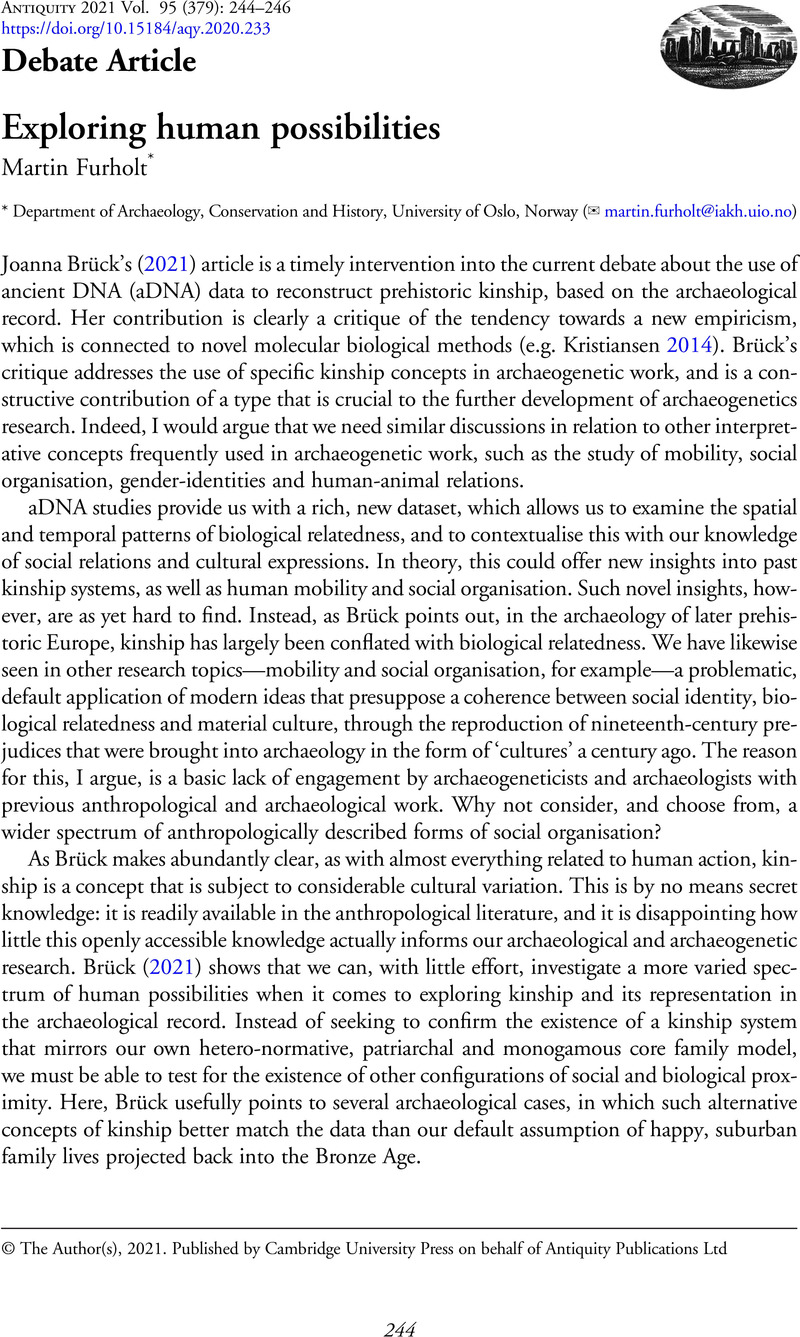Crossref Citations
This article has been cited by the following publications. This list is generated based on data provided by Crossref.
Brück, Joanna
2021.
Kinship: politics and practice.
Antiquity,
Vol. 95,
Issue. 379,
p.
249.
Reiter, Samantha S.
and
Frei, Karin M.
2024.
Gender Trouble and Current Archaeological Debates.
p.
101.
Ribeiro, Artur
2024.
On Traces, Clues, and Fiction: Carlo Ginzburg and the Practice of Archaeology.
Open Archaeology,
Vol. 10,
Issue. 1,
Mazzucato, Camilla
Coscia, Michele
Küçükakdağ Doğu, Ayça
Haddow, Scott
Kılıç, Muhammed Sıddık
Yüncü, Eren
and
Somel, Mehmet
2025.
“A Network of Mutualities of Being”: Socio-material Archaeological Networks and Biological Ties at Çatalhöyük.
Journal of Archaeological Method and Theory,
Vol. 32,
Issue. 1,



